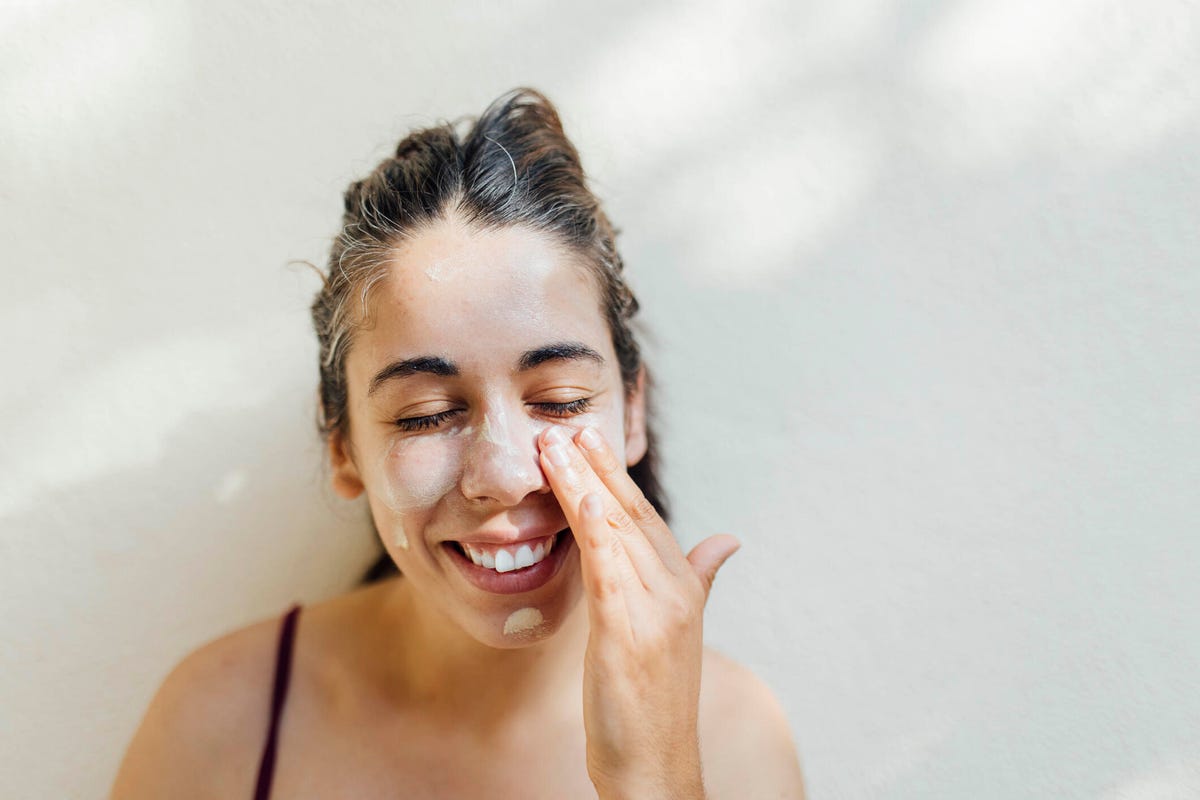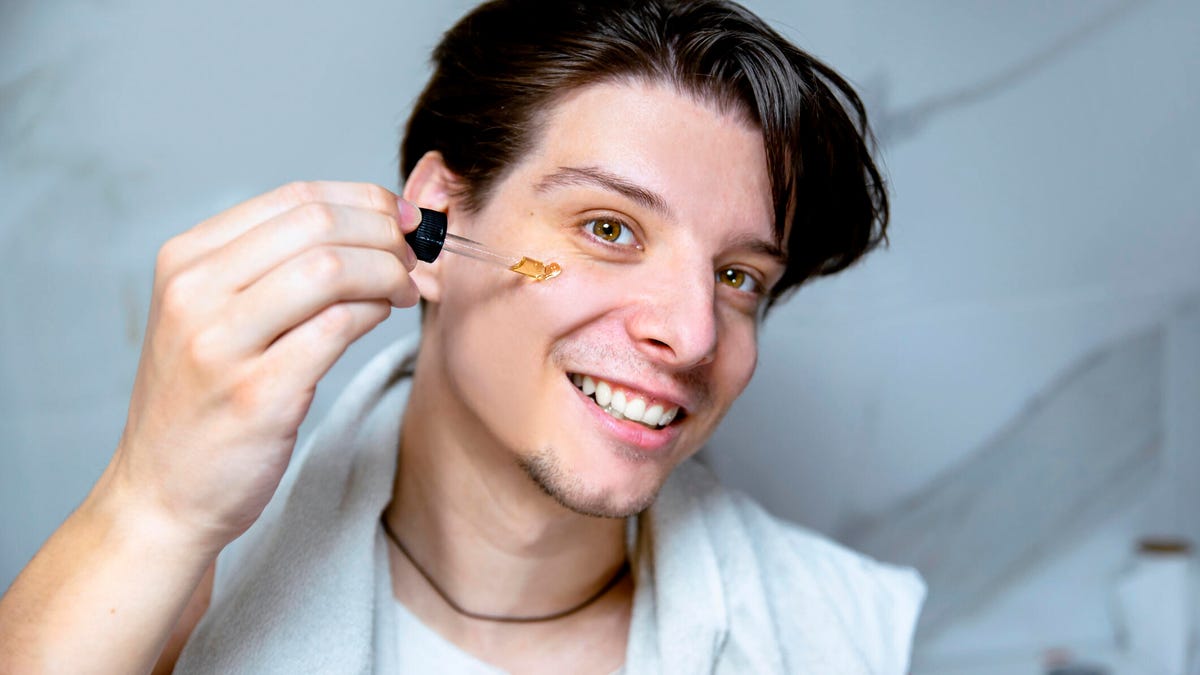Table of Contents


Spending too much time outdoors or indoors under a sunbed without protection can lead to serious health problems. AIM at Melanoma Foundation warns that every time you burn, you damage the DNA in your skin. The more you burn, the greater your risk of developing skin cancer. That’s why sunless self-tanners are a safer alternative than baking your skin under UV rays.
From St. Tropez and Bali Body to Hawaiian Tropic, many brands offer ways to get an instant tan or a gradual glow. Popular types of self-tanners include lotion, oil, mousse, spray and drops. But are these products right for everyone? Dermatologists are here to give their opinion.
What are self-tanners?
Self-tanners are products that mimic the look of a tan without damaging your cells like a real suntan would. You can use these products to gradually tan, like with a daily moisturizer, or to get a quick tan with an instant tan cream. Even instant tan products can take a few hours to absorb, but they are a great option for getting a tan right before a big event or on vacation.
How do they work? If Dr. Natalie Honea dermatologist at Memorial Hermann in Texas, says, “These products typically contain dihydroxyacetone (DHA), which reacts with the outer layers of the skin to produce a tan. DHA is FDA-approved for topical use.” More specifically, the Skin Cancer Foundation explains that DHA binds to the amino acids in your skin, thus providing a tan.
It is worth noting that there is a difference between self-tanning products and tanning products. While self-tanners mimic the look of being in the sun, tanning products change how the sun interacts with your skin. Something like tanning oil contains mineral and coconut oil to help you tan faster under UV rays. These products are not as safe as self-tanners.
Are self-tanners safe?
Compared to the sun, self-tanners are safer. In general, you should be able to use these products without any negative side effects. However, Hone advises, “Self-tanners are generally safe to use when applied as directed. However, it is important to follow the instructions to reduce the risk of skin irritation.”
When choosing a product, you can also consider how dry your skin is. Dr. Yoram Hartha board-certified dermatologist and medical director of MDhair, explains, “Self-tanning oils are often lighter in texture and can provide a more natural-looking glow, making them suitable for dry skin. They can be easier to apply and absorb quickly, but they may need to be applied more often.”
As for self-tanning lotions, Harth says, “Self-tanning lotions, on the other hand, are thicker and offer more hydration, making them ideal for normal to dry skin types. They may offer longer-lasting results, but require more effort to blend evenly.”
If you have a existing skin conditionsuch as contact dermatitis or eczema, it is best to consult your dermatologist or doctor before trying a new self-tanner. You may be more likely to experience discomfort or other side effects.
Is it safe to wear self tanners at night?
Dermatologists recommend following the instructions on your self-tanner. Leaving your self-tanner on longer than recommended can not only result in a patchy tan, but can also irritate your skin. That said, as long as your self-tanner is meant to be worn for multiple hours, it may be fine to wear to bed.
Harth puts it this way: “Yes, it is generally safe to wear self-tanner overnight. Most self-tanners are designed to develop over several hours, and leaving them on the skin overnight can make them more effective.”
However, wearing your tanning product to bed can have other consequences. The doctor warns, “To avoid staining your bedding, wear loose, dark clothing and allow the product to dry completely before going to bed. If you have sensitive skin, it’s best to do a patch test first to make sure you don’t have a reaction.” A patch test is always a good idea, but especially if you plan on sleeping at night and you won’t immediately notice a negative reaction.

Should I use sunscreen in combination with a self-tanner?
The short answer is yes. It’s essential to continue following your SPF routine, even after you’ve applied a self-tanner. As Hone explains, “Self-tanners provide a cosmetic tan, but they don’t protect against UV rays.” Unless your self-tanning products advertise SPF, and most don’t, don’t assume they’re meant to block harmful UV rays.
As for how to supplement your self-tan with SPF to stay safer outdoors, Hone says, “To protect your skin from sun damage and reduce your risk of skin cancer and premature aging, apply a broad-spectrum sunscreen with an SPF of 30 or higher every day. And reapply every two hours when you’re outdoors.” Harth agrees, saying that wearing SPF in addition to self-tanner “will help protect your skin from sun damage and help your tan last longer.”
Check your self-tanner to see when you can apply other products over it without your tan smudging. If it’s recommended to wait an hour before showering to remove your self-tanner, try to avoid spending a lot of time outdoors during that time frame. Even sitting in the car can increase your risk of sunburn, so apply sunscreen to your face and body every day.
Risks of self-tanners
There are some risks associated with self-tanning lotions and oils, although most people can tolerate these products without problems. Harth cautions, “Some people may experience allergic reactions or skin irritation, especially if they have sensitive skin.”
The Cleveland Clinic says it’s important to remember that spray tans can carry risks that aren’t present with self-tanning lotion or other topical products. The hospital notes that the FDA has not approved DHA for use in spray tan booths. According to the FDAThis is because it is sometimes impossible to avoid inhaling spray tan products or getting them on your eyes and lips.
The FDA recommends asking yourself if your eyes are protected, if your lips are covered, and if there is any inhalation protection before using a spray or mist. Harth agrees with this recommendation: “Inhaling or ingesting self-tanners can be harmful, so avoid applying them near your eyes, mouth, or nose.”
If you have particularly sensitive skin, may want to avoid products with perfume or preservatives, which are more likely to cause a negative reaction. Always test a small area before treating the rest of your body.

How to care for your skin when using a self-tanner
First of all, wearing sunscreen is the best way to keep your skin healthy when using a self-tanner. Additionally, the dermatologists we spoke with offer practical tips for keeping your skin healthy and your fake tan looking great.
Hone offers the following five-point plan for skin care while self-tanning:
- Exfoliate: Exfoliate your skin before applying a self-tanner. This removes dead skin cells and creates a smooth surface for even application.
- Hydrate: Make sure your skin stays well hydrated, especially in areas that dry out quickly, such as elbows and knees. This will prevent uneven brown spots from forming.
- Avoid shaving or waxing immediately before application: this can irritate your skin and lead to an uneven tan.
- Use a tanning mitt: this will help you apply the product evenly and prevent stains on your hands.
- Limit exposure to water: Avoid swimming or excessive sweating after application to ensure your tan develops evenly.
Harth explains that you should avoid sweating or being in water for about six to eight hours after applying self-tanner. He agrees that moisturizing and exfoliating are helpful when applying your self-tanner, but adds that it can also benefit your look once your tan starts to fade. “Regular exfoliation and moisturizing will help your tan fade evenly and naturally,” he says.


